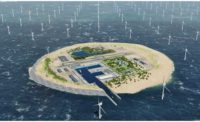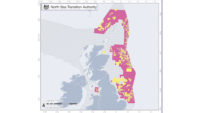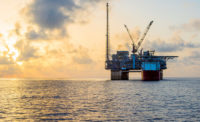

Removing offshore oil platforms in the North Sea is expected to ramp up in the coming years as production declines.
A recent report issued by the energy consulting firm Douglas-Westwood, “The North Sea Offshore Decommissioning Report,” estimates that decommissioning costs over the next 30 years could exceed $76 billion.
“Decommissioning will ramp up between 2016 and 2020,” says Angela MacCormack, a researcher at Douglas-Westwood and the report’s main author.
The report notes that the North Sea contains 478 oil-and-gas platforms and 7,888 wells, the majority of which are located in British and Norwegian waters, with the remainder divided between the territories of the Netherlands, Denmark and Germany. The platforms range widely in size, with 76 exceeding 10,000 tonnes.
Decommissioning is regulated by the Oslo/Paris Convention for the Protection of the Marine Environment of the North-East Atlantic (OSPAR), the legal mechanism by which 15 countries and the European Union cooperate. Under the OSPAR regulations, “decommissioning costs are born by the platform owners, although the governments may grant the owners some tax relief,” says MacCormack.
The report discusses two different scenarios for the removal work. One is premised on existing techniques, which would entail cutting the platforms' jackets (the underwater support structures) into large pieces, then lifting and loading them onto heavy-lift vessels, and delivering them, along with the topside modules, to salvage yards for recycling.
A second scenario is based on the development of super-heavy lift vessels (SLVs) capable of lifting upward of 15,000 tonnes, which would allow complete topsides to be removed and deconstructed onshore. “Deconstructing onshore results in much lower costs, as it involves fewer vessel days offshore,” according to MacCormack. The report predicts that almost $11 billion could be saved if SLVs are used.
Although decommissioning has been going on for years elsewhere, the methodologies and lessons learned are not directly applicable to the North Sea.
“The Gulf of Mexico is very different—the platforms there are in shallower waters, and weather conditions are less severe,” says MacCormack.







